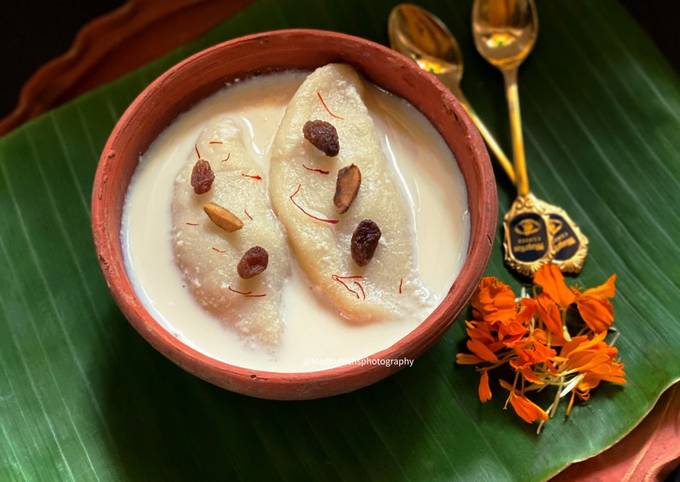Pithe Magic: A Taste of Home, Sweet Home!
Namaste Dosto! Kem cho? Assalamualaikum! Sat Sri Akal! And a big, warm hello to all my fantastic readers from around the globe! Chef Curry Do’pyaza here, ready to whisk you away on another culinary adventure. Today, we’re diving headfirst into the delightful world of Pithe – those delicious, diverse, and downright irresistible treats from the eastern parts of our beautiful Bharat.
Pithe are more than just food; they are memories, traditions, and a whole lotta love rolled into one bite.
When Do We Feast on These Beauties?
Pithe are especially popular during the winter months. Imagine cozy evenings, a crackling fire, and the aroma of freshly made pithe wafting through the air. Bliss, isn’t it? In Bengal and Assam, they are a staple during Poush Sankranti (Makar Sankranti) and Bhogali Bihu, respectively. These festivals celebrate the harvest season, and pithe are a way to give thanks for nature’s bounty. They are also made during other festive occasions and family gatherings, adding a sweet touch to the celebrations. It’s a beautiful custom, wouldn’t you agree?
A Little Peek into Pithe History
Pithe have a rich history, dating back centuries. They are deeply rooted in the culinary traditions of Bengal and Assam, with each region boasting its own unique variations. Passed down through generations, these recipes are a testament to the ingenuity and resourcefulness of our ancestors. They are a delicious example of how simple ingredients can be transformed into something truly special.
Let’s Get Cooking!
Today, I’m sharing a classic recipe for Dudh Puli, a sweet milk-based pithe that’s guaranteed to win your heart.
Preparation Time: 20 minutes
Cooking Time: 30 minutes
Ingredients You’ll Need:
- For the Puli (Dumplings):
- 1 cup Chaler Guro (Rice Flour)
- 1/2 cup Narikel Kora (Grated Coconut)
- 1/4 tsp * লবণ* (Salt)
- Lukewarm water (as needed)
- For the Dudh (Milk) Mixture:
- 1 liter Dudh (Full Cream Milk)
- 1/2 cup * চিনি* (Sugar), adjust to taste
- 4-5 * এলাচ* (Green Cardamoms), lightly crushed
- A few strands of * জাফরান* (Saffron), optional
- 1/4 cup খেজুর গুড় (Date Palm Jaggery), optional for extra flavour
Step-by-Step Instructions (Easy Peasy!)
- Making the Dough: In a big bowl, mix the chaler guro (rice flour), narikel kora (grated coconut), and lobon (salt). Add lukewarm water little by little and knead into a smooth, pliable dough. The dough should be soft but not sticky.
- Shaping the Puli: Divide the dough into small, equal-sized balls. Roll each ball between your palms to make a smooth sphere. Gently flatten each sphere and shape it into a small, boat-like or crescent shape. You can use your fingers to pinch the edges to create a decorative pattern, if you are feeling fancy!
-
Preparing the Milk: In a heavy-bottomed pot, bring the dudh (milk) to a gentle boil over medium heat. Reduce the heat to low and add the chini (sugar), elaichi (cardamoms), and jafran (saffron), if using. Stir well until the sugar is completely dissolved.
-
Cooking the Puli: Gently drop the shaped puli (dumplings) into the simmering milk. Be careful not to overcrowd the pot. Cook for about 20-25 minutes, or until the puli are cooked through and have puffed up slightly. Stir occasionally to prevent them from sticking to the bottom of the pot.
-
Adding the Jaggery (Optional): If you’re using khejur gur (date palm jaggery), add it during the last 5 minutes of cooking. This will give the dudh puli a rich, caramel-like flavour.
-
Serving: Once the puli are cooked, remove the pot from the heat and let it cool slightly. Serve warm or chilled.
Chef’s Tips for the Best Dudh Puli
- Fresh is Best: Use freshly grated coconut for the best flavour.
- Don’t Overcook: Be careful not to overcook the puli, or they will become rubbery.
- Sweetness is Key: Adjust the amount of sugar to your liking.
- Patience is a Virtue: Cook the puli over low heat to ensure they cook evenly.
- Resting Time: Allowing the puli to rest in the milk for a while after cooking helps them absorb the flavour.
Cooking it Your Way: Different Methods
- Gas Stove: The traditional and most common method. Follow the instructions above.
- Induction Stove: Works just like a gas stove. Adjust the heat settings accordingly.
- Pressure Cooker (Not Recommended): While you could technically cook the milk mixture in a pressure cooker, it’s not recommended as the puli may break apart.
- Oven (Not Suitable): This recipe is not suitable for baking in an oven.
- Microwave (Not Recommended): Microwaving the milk can cause it to boil over and the puli might not cook evenly.
- Air Fryer (Not Suitable): This recipe is not suitable for an air fryer.
- Slow Cooker/Crockpot: You can use a slow cooker to simmer the milk mixture, but you’ll still need to cook the puli separately and then add them to the warm milk.
Nutritional Information (Approximate, per serving):
- Calories: 250-300
- Protein: 8-10g
- Carbohydrates: 40-50g
- Fat: 8-12g
Note: These values are approximate and may vary based on specific ingredients and portion sizes.
Serving Suggestions:
- Serve dudh puli warm or chilled as a dessert.
- Garnish with chopped nuts like almonds or pistachios for added flavour and texture.
- Pair it with a scoop of vanilla ice cream for a truly decadent treat.
- Enjoy it with a cup of hot chai or coffee.
Time to Get Cooking, Folks!
So there you have it – my simple yet delightful recipe for dudh puli. I urge you to try this recipe at home and share the joy with your friends and family. It’s a fantastic way to experience the rich culinary heritage of India and create some lasting memories. Happy cooking, and until next time, keep spreading the love, one delicious dish at a time!
